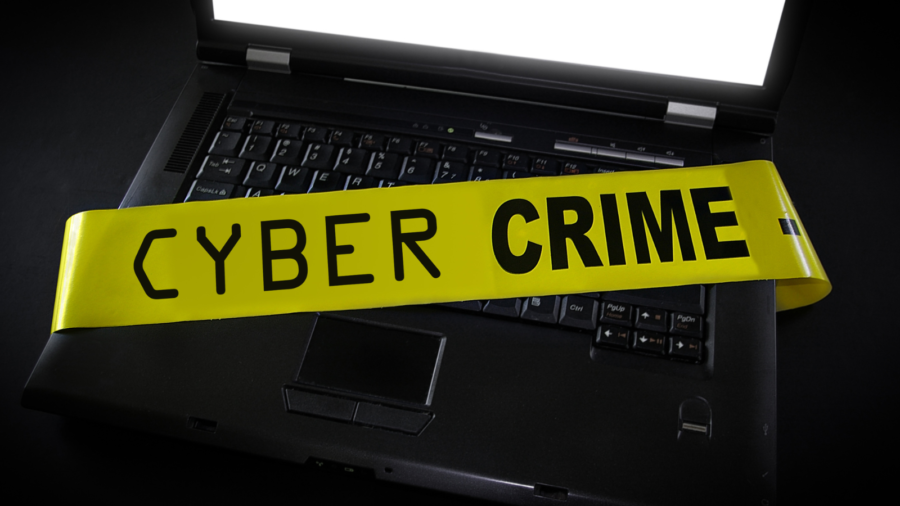Cyber Crime
In today’s interconnected world where nearly every aspect of our life is spiced by the digital realm, the rise of Cyber crime poses a significant spread to individual businesses and society at a large scale. It compasses a wide range of illegal activities conducted through the use of computer networks and the internet. The evolution of technology has brought unprecedented convenience and opportunities for innovation but it has also created new avenues for criminal activity. The rapid pace of technological advancement means that cyber threats are constantly evolving. It’s impact-free and will be rated beyond the digital realm.
Hacking involves gaining and authorized access to a computer system or a network with the intent of stealin sensitive information, disrupting operations or causing damage. This includes exploding software vulnerability and brute force attacks. Cybercrime also involves malware, short for malicious software encompasses a variety of malicious programs designed to infiltrate and damage computers or networks. This intrudes viruses, worms, Trojans, ransomware and spyware which can be used to sell data incorrupt files or take control of the system. Phishing involves the use of deceptive emails websites or messages to take individuals into divulging sensitive information such as login credentials financial details or personal information. Identity theft occurs when a cyber criminal still someone’s personal information such as their name and social security number at credit card details and uses it for fraudulent purposes such as making unauthorised purchases opening an account or committing financial fraud. Online fraud is a compasses range of fraudulent schemes conducted over the internet including investment scams, auction fraud, and fake websites selling counterfeit goods.
Cyber attacks can result in significant financial losses for both individuals and businesses. For individual identity test online fraud and transformation, we are attacking leads to unauthorized transactions, stolen funds or extortion payments. For businesses, the cost of mitigating Cyber attacks recovering from data bridges and compensating affected customers can be substance not to mention the laws of revenue due to disrupted operation.

The evolution of cybercrime precedes the advancement of technology with each technological innovation of new opportunities for exploitation by malicious actors. The emergence of personal computers in the 1980s gave rise to the first generation of computer hackers who are often motivated by curiosity rather than malice exploding the capabilities of computer systems and networks. In the 1990s is so a proliferation of malware and cyber-attacks targeting both individuals and organizations. The 2000s mark-day expansion of the cybercrime economy was driven by the increasing connectivity of the internet and the rise of online financial transactions. The 2010 witnessed a shift toward more sophisticated and targeted cyber attacks by well-funded criminal organizations and nations state after. As we entered 2020 cyber crime began to leverage artificial intelligence and exploit were nobilities of the Internet of Things ecosystem. Looking ahead emerging technology such as Quantum computing poses both opportunities in challenges for cyber security. Building cyber resilience through proactive threat intelligence incident response capabilities and collaboration between stakeholders will be essential in mitigating the evolving threat landscape of Cybercrime.
Combating cybercrime requires a multifaceted approach involving collaboration between government Law enforcement agencies businesses and individuals The government needs to establish an enforced law that criminalised various forms of Cybercrime including hacking malware distribution identity theft and online fraud.
Organisations must implement comprehensive cyber security measures including firewalls, institution detection system encryption and access control to protect their network system and data from cyber threats. Educating employees about cyber security best practices such as recognising fishing attempts creating a strong password and reporting suspicious activities is critical in preventing successful cyber attacks. Collaboration between government agencies law enforcement industrial associations and private sector organizations’ poster information sharing creates intelligent sharing and coordinated response efforts to combat cybercrime effectively. Launching a public awareness campaign to educate individuals about the risk of Cybercrime promotes safe online behavior and empowers them to protect themselves from cyber threats. Establishing channels for organizations to report cybercrime incidents to law enforcement agencies and facilitating operations in investigation and prosecution. By adopting a holistic approach that combines legislative technology and collaborative A4 district holders can work together to combat cybercrime and create a safer digital environment for all.
AI-powered cyber attacks in which cyber criminals in poisoning leverage AI and machine learning algorithms to automate and enhance the sophistication of their attack in building them to bypass traditional security differences and target is more effectively. The growing number of interconnected IoT devices ranging from Smart home appliances to industrial control systems create new attack vectors for Cyber criminals to exploit leading to potential risks such as data reach run somewhere attack and the destruction of critical infrastructure. The emergence of ransom whereas a service platform allows cybercrime with limited technical expertise to learn somewhere attack using free built and infrastructure in a building them to monetize their activity through extortion schemes and ransom payment.. addressing these future challenges and print requires a proactive and collaborative approach involving government cyber security professionals industries, stakeholder and international organization to strengthen cyber security deferences promote information sharing and develop innovative strategies for combating cybercrime in an increasingly interconnected and digitally dependent world.




